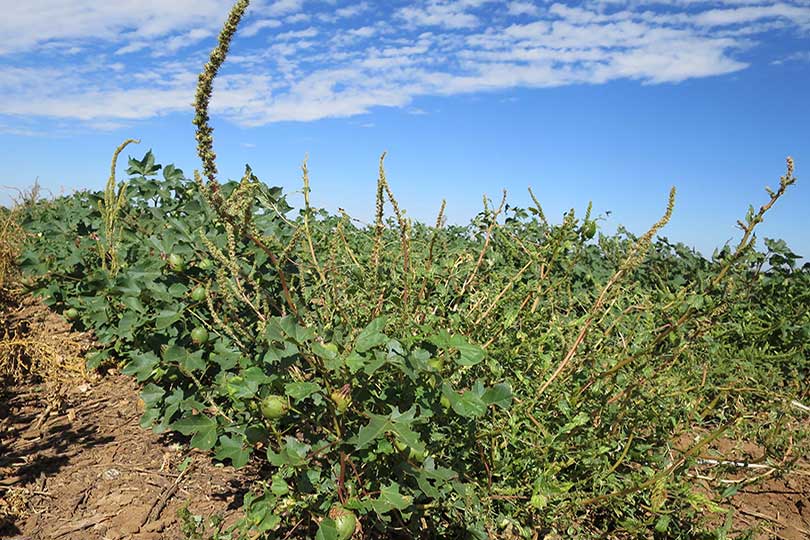By Jennifer Dorsett
Field Editor
Pigweed has caused serious problems for farmers in Texas and the United States, but scientists believe they may have discovered how the weed develops resistance to the herbicide glyphosate
Scientists from the U.S. Department of Agriculture’s (USDA) Agricultural Research Service (ARS) and Clemson University recently published their findings, noting genetic features that makes pigweed, or Palmer amaranth, difficult to control.
They discovered a specific genetic feature, an extrachromosomal circular DNA (eccDNA) replicon, that gives pigweed its glyphosate-resistant trait.
“The DNA structure of the eccDNA replicon is sophisticated,” Chris Saski, Clemson University associate profession of Systems Genomics, said. “This circular molecule contains functional genes intermixed among complicated repetitive DNA that seemed to have originated from different chromosomes to form the circle. Sequencing it was difficult and was only possible with advanced single-molecule technology.”Glyphosate, commonly known as Roundup, is a broad-spectrum herbicide that kills grasses and broadleaf weeds by inhibiting an enzyme, EPSPS, found only in plants and some bacteria.
It was introduced by Monsanto in the 1970s and quickly became the most widely used herbicide on the market.
Roundup Ready soybeans were introduced in 1996, followed by Roundup Ready cotton in 1997. The Roundup Ready seed had the advantage of being genetically modified to resist glyphosate, so farmers could spray fields and kill weeds while crops remained intact.
But after only a decade, pigweed began appearing in treated fields. According to Purdue University, the invasive plant can reduce crop yields up to79 percent in soybeans and by as much as 91 percent in corn.
How did pigweed develop resistance to a new herbicide so quickly?
The answer, according to Saski, lies in the plant’s genetic responses to glyphosate stress.
In addition to the normal chromosomes which carry the gene for EPSPS, DNA in resistant plants displayed large, self-replicating circular DNA. This eccDNA replicon was found to contain 59 genes, including a subset that showed higher expression after treatment with glyphosate.
“What this means is plants like pigweed that contain the eccDNA are able to survive and propagate where glyphosate is used frequently,” Saski said. “Understanding the complete genomic structure and function of the eccDNA replicon will aid our knowledge of how plant genomes respond and evolve to stresses and help to further refine herbicide treatment strategies and combat the rise of resistant weeds.”
He noted the findings could lead to new approaches in genome engineering and steering the expression of useful agronomic traits in other plants.
Click here to access the research article from the American Society of Plant Biologists.

